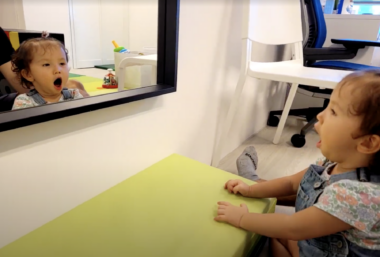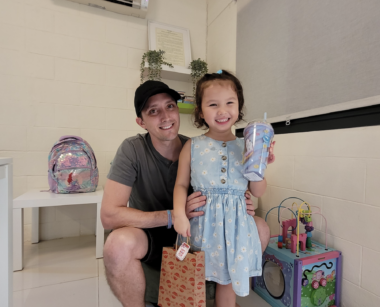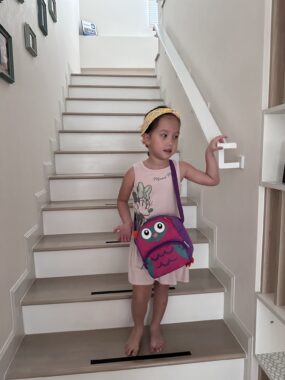Teaching our daughter dressing skills helped her gain independence
Getting dressed served as a form of occupational therapy for Rylae-Ann
Written by |

As I straightened my tie in the mirror, I could hear my daughter’s giggles getting progressively louder as she stumbled her way to my bedroom. When I heard her finally enter, I glanced over my shoulder and was greeted with a delightful scene that looked like a pink baby elephant doing a dance. Somehow, she’d found a way to tangle her shirt around her head with a single pink sleeve dangling from where her face should have been.
Rylae-Ann was born with a rare neurotransmitter disorder known as aromatic l-amino acid decarboxylase (AADC) deficiency. This rendered her bedridden and required my wife, Judy, and me to provide 24-hour care.
Despite her severe symptoms, we sought the advice of an occupational therapist to see what interventions we could do with her. It turned out that getting dressed, along with many other routine tasks, could be part of the sessions.
Mastering dressing skills empowers children to take care of themselves, with the goal of achieving independence. The journey of improving these skills can boost self-confidence and offer a sense of accomplishment.
Starting the journey of dressing
It was our dream for our daughter to one day achieve independence, but it seemed so far away when she was born. In the meantime, we saw dressing as a way for her to develop motor skills, coordination, and overall physical strength.
Although Rylae-Ann couldn’t move, Judy and I acted as puppeteers to help her wear her clothing. We manipulated her limbs and hands so she could see and feel the clothing go on. Helping her participate in getting dressed was no easy feat. She couldn’t even hold her head up, so the process required us to be creative.
Sometimes we helped her while she was lying down, and other times we sat behind her. But the best way was for Judy and me to act as a team. It was much easier for us to take complete control, dress her, and move on with our day. However, the therapist’s advice encouraged us to take advantage of the opportunity to develop her skills through dressing.
Choosing the right clothing
There was no point in making dressing any more challenging. As much as Judy wanted to clothe Rylae-Ann in cute dresses and flashy outfits, it added an extra layer to an already difficult task. In addition, choosing the correct clothing helps reduce sensory processing issues caused by annoying tags, trigger-inducing lace, or strange fabric.
Later, we learned that occupational therapists use clothing and dressing to help with sensory integration. Dressing involves sensory experiences like touch, awareness of body position, and visual perception. An occupational therapist uses the task of dressing to help children navigate these sensory inputs.
Creating metered milestones
Fortunately, Rylae-Ann received gene therapy when she was 18 months old. Once she started moving, accomplishing developmental milestones was easier, as she was already familiar with the routines.
We slowly increased her dressing skills by creating incremental milestones. For example, I would hold a shirt in position so it was lined up, but she had to put her arm through the sleeve. Over time, I added less support, and she had to do slightly more work.
Another easy task was placing clothing out in a specific way each time. She learned where to go in the morning and knew what she was wearing. This removed extensive arguments Judy and I did not want to have at 5:30 a.m. Also, it helped her follow a choreographed routine for how the shirt went on. As we helped her through the choreography, we reminded her of signals such as “tag in the back” to help her accomplish dressing.
Tears and cries for assistance still occasionally happen during the dressing process. However, we also have funny moments when Rylae-Ann enjoys the silly knots she can make with her clothes and body.
Teaching Rylae-Ann how to get dressed supports her development of essential life skills, which contribute to her overall well-being and independence. As she becomes more independent, we are treated to entertaining moments during our beautiful journey together.
Note: AADC News is strictly a news and information website about the disease. It does not provide medical advice, diagnosis, or treatment. This content is not intended to be a substitute for professional medical advice, diagnosis, or treatment. Always seek the advice of your physician or other qualified health provider with any questions you may have regarding a medical condition. Never disregard professional medical advice or delay in seeking it because of something you have read on this website. The opinions expressed in this column are not those of AADC News or its parent company, Bionews, and are intended to spark discussion about issues pertaining to aromatic l-amino acid decarboxylase deficiency.








Leave a comment
Fill in the required fields to post. Your email address will not be published.